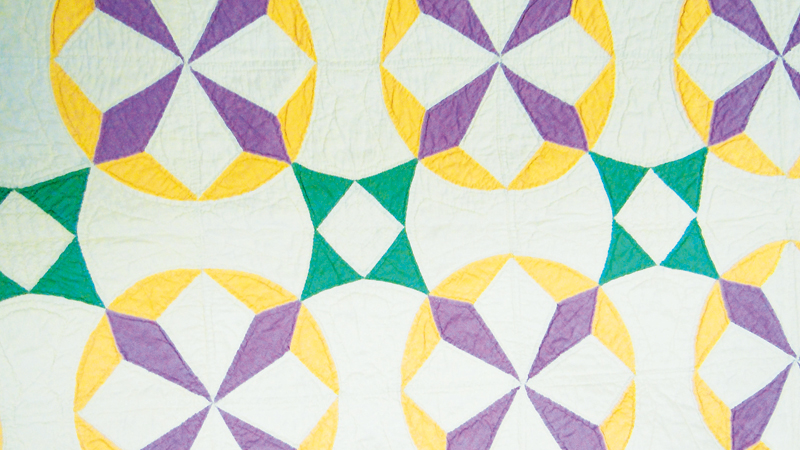A CENTURY OF PROGRESS – Around The Frame

Sears who had been headquartered in Chicago since the 1890s held the National Quilt Contest and encouraged the contestants to create imaginative quilts around the theme A Century of Progress. The drama and scandal that ensued are captured in Merikay Waldvogel’s lecture at: bit.ly/2EnQMpp
Merikay and Barbara Brackman are the authors of Patchwork Souvenirs of the 1933 World’s Fair. It is an exhaustive study of the contest, the judges, the quilters, their quilts and the aftermath of the contest. Needless to say, Sears underestimated how many quilters would enter the contest, but when there is a $200 prize at stake (almost $3800 in 2018 dollars) with a Depression underway, quilters were highly motivated to participate.
Last summer I acquired a quilt from a lady who was given it by another lady decades ago. Both ladies did not have family to pass it down to, so the current keeper of the quilt asked me to find it a good home. The quilt had an unusual design: a cross between a compass and a star. I wondered if it had a name, so I recently checked through Barbara Brackman’s Encyclopedia of Pieced Quilt Patterns and discovered it was a Century of Progress pattern. According to the accompanying entry the pattern appeared in the Farm Journal ca. 1933. Next, I turn to the index and under “Century of Progress” I find four other entries. Two are attributed to Nancy Cabot a pseudonym for Loretta Leitner who was the needlework editor and columnist for the Chicago Tribune in the 1930s. One of her designs looks like a shooting six-point star and the other looks like an off-center log cabin. Both of these patterns are also dated to 1933. Sears tried to encourage creativity and originality, but obviously pattern designers were busy creating “Century of Progress” patterns for the less creative. It makes me wonder how many of the 25,000 entries were based on commercially produced patterns.
Who knows? Perhaps in another 15 years when Chicago hits the Big 300 they will host another World’s Fair to mark even greater technological advances that we can’t even imagine and another quilt contest will be held to celebrate quilting ingenuity.
- The Stars & Stripes Are Forever: Around The Frame - July 5, 2024
- Sam Butcher: A Life Filled With Precious Moments ~ Around The Frame - June 7, 2024
- Aunt Dora & Her Well-Lived Life ~ Around The Frame - May 10, 2024


